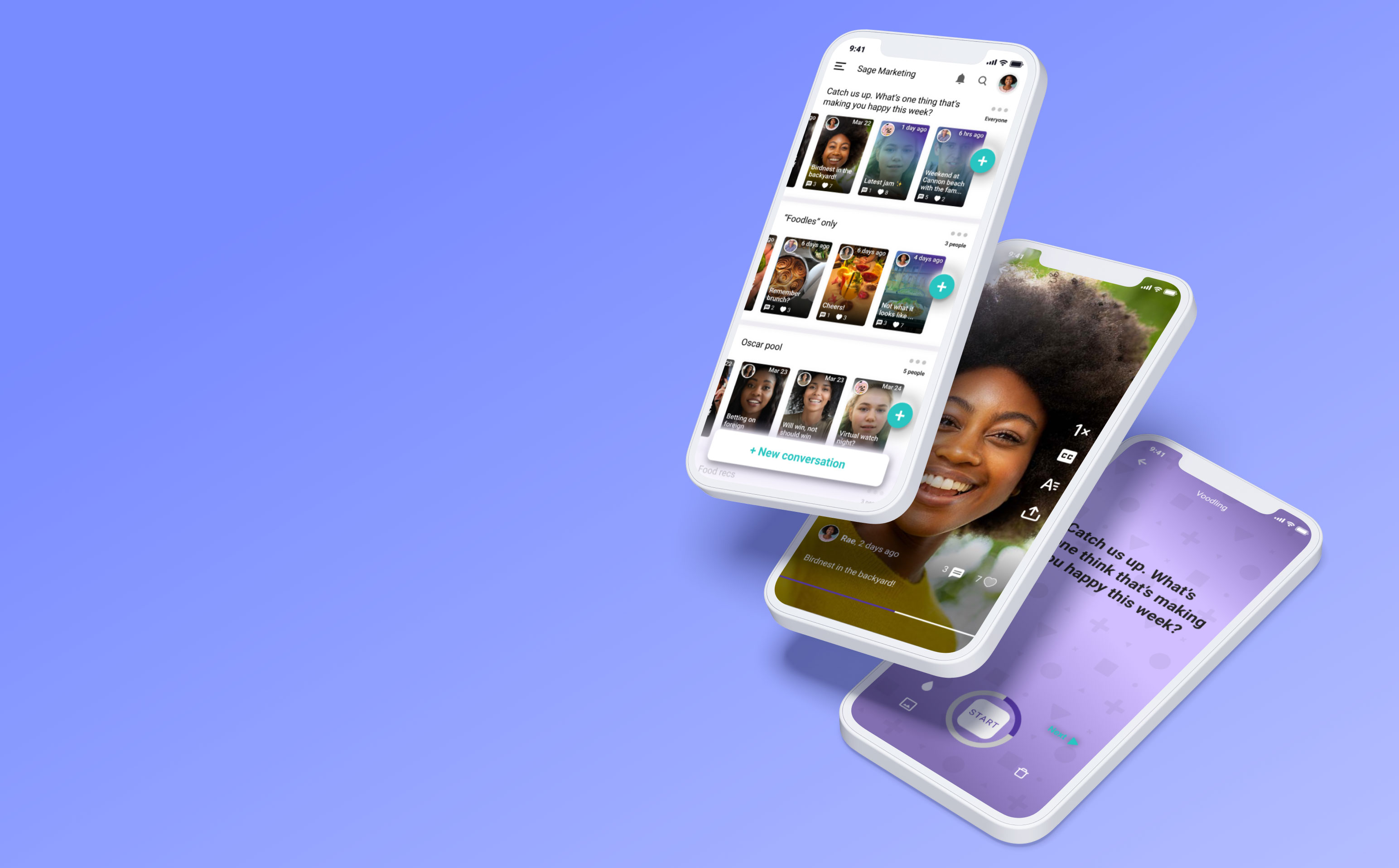Seattle Times
8 month project
Research, design, prototyping
UX designer
Visual & prototyping lead
Graduate students
Anmol Anubhai
Alex Pham
My team partnered with The Seattle Times to research the challenge of growing subscription relationships with young Seattle. We identified design opportunities , and developed a three-month research plan .
We designed and left culture probes with millenial participants, and explored the results with journalists in a design workshop .
Drawing from our research insights , I built a journey map to guide our final designs .
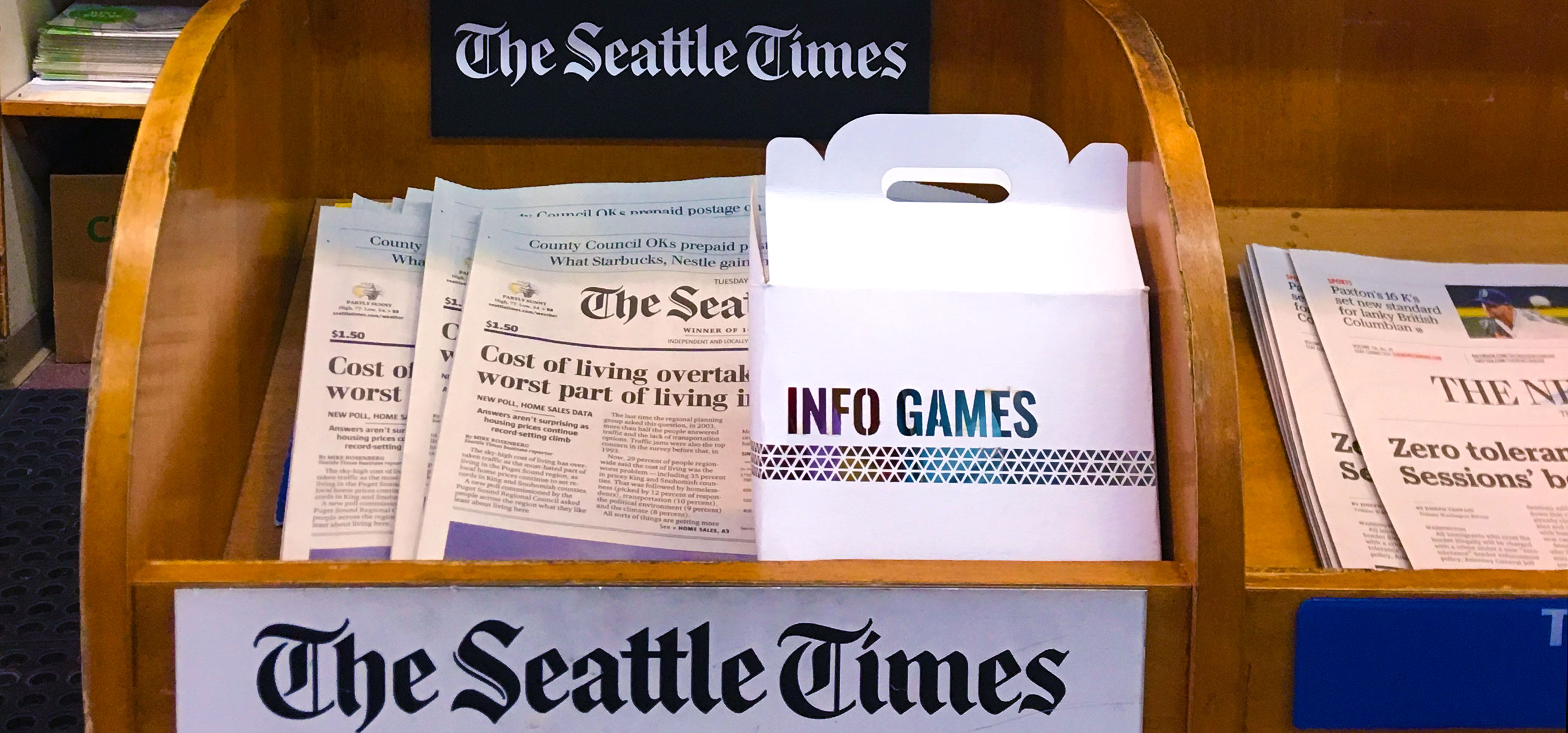
I designed these graphics to illustrate my team's participant findings.
We identified three types of relationships between millenials and local communities.
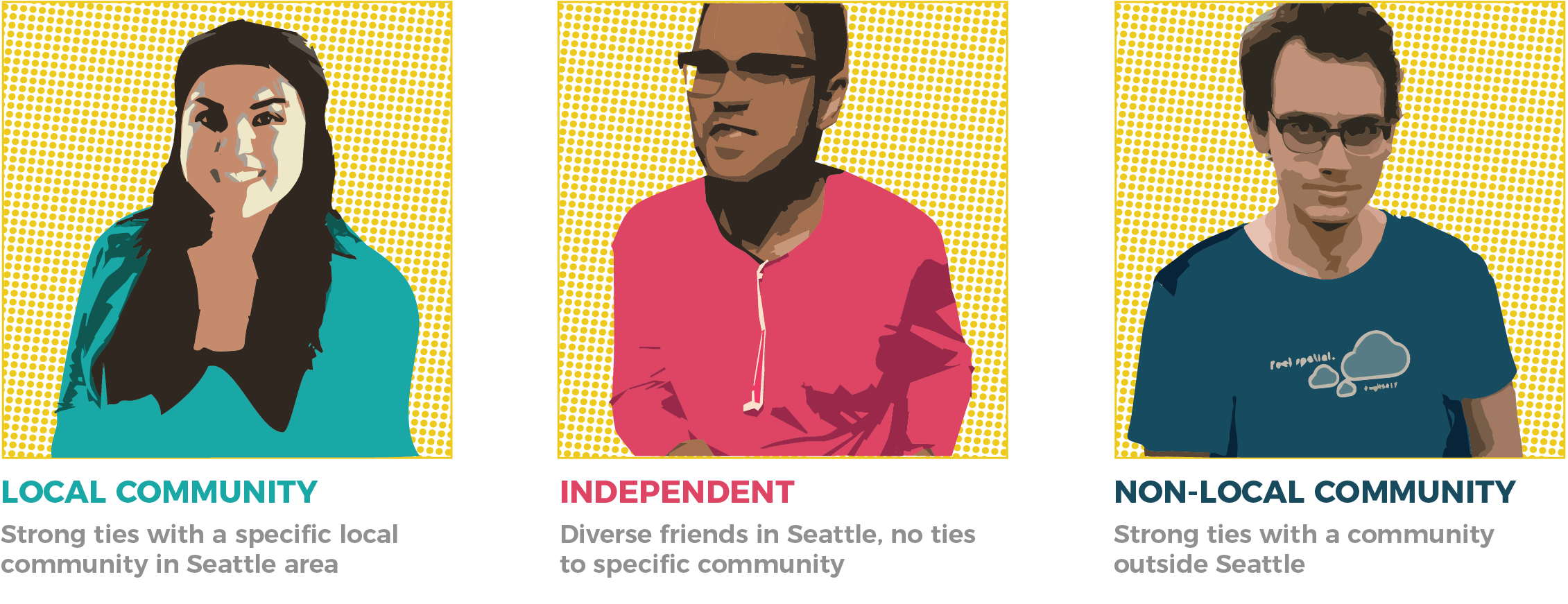
Nobody is sure what makes a welcomed news experience today.
“ |
Our readers are
|
As we interviewed Seattle Times staff members, this quote came up again and again. Their subscriber base was aging. They wanted to serve a younger, digital, and more diverse audience, but lacked strategies.
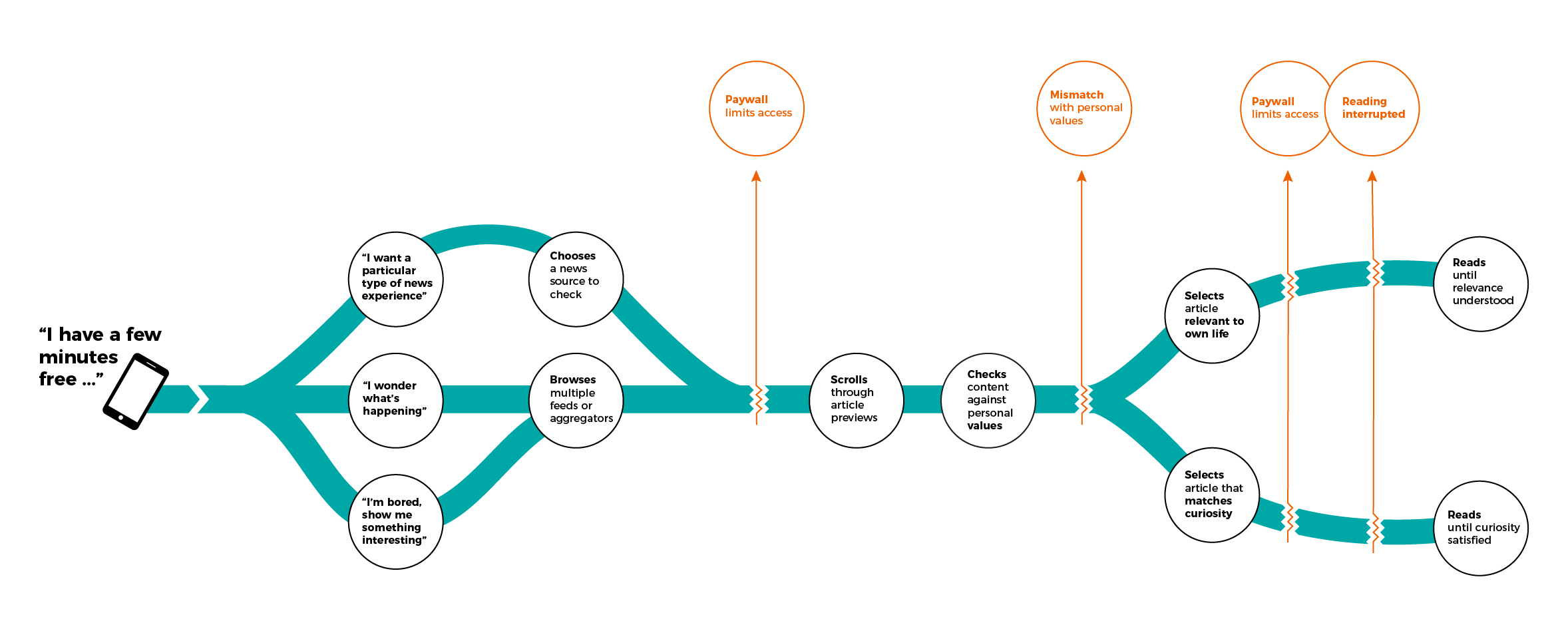
Research led us to three design opportunities:
Rethink the paywall experience to motivate young readers to subscribe to news sources |
Design a news interface that lets readers share which stories influence their lives and values |
Create an experience that flows intuitively across short breaks, matching reading behavior |
A participant shows me her culture probe during an interview.

My team conducted a literature review and competitive assessment to understand the state of digital journalism. The Seattle Times shared audience analytics and past reports. We built forward from this data to choose our primary research methods.
I designed this graphic to help my team visualize the balance between our different research methods.
We focused on filling the qualitative data gap - providing what the Times did not already have.
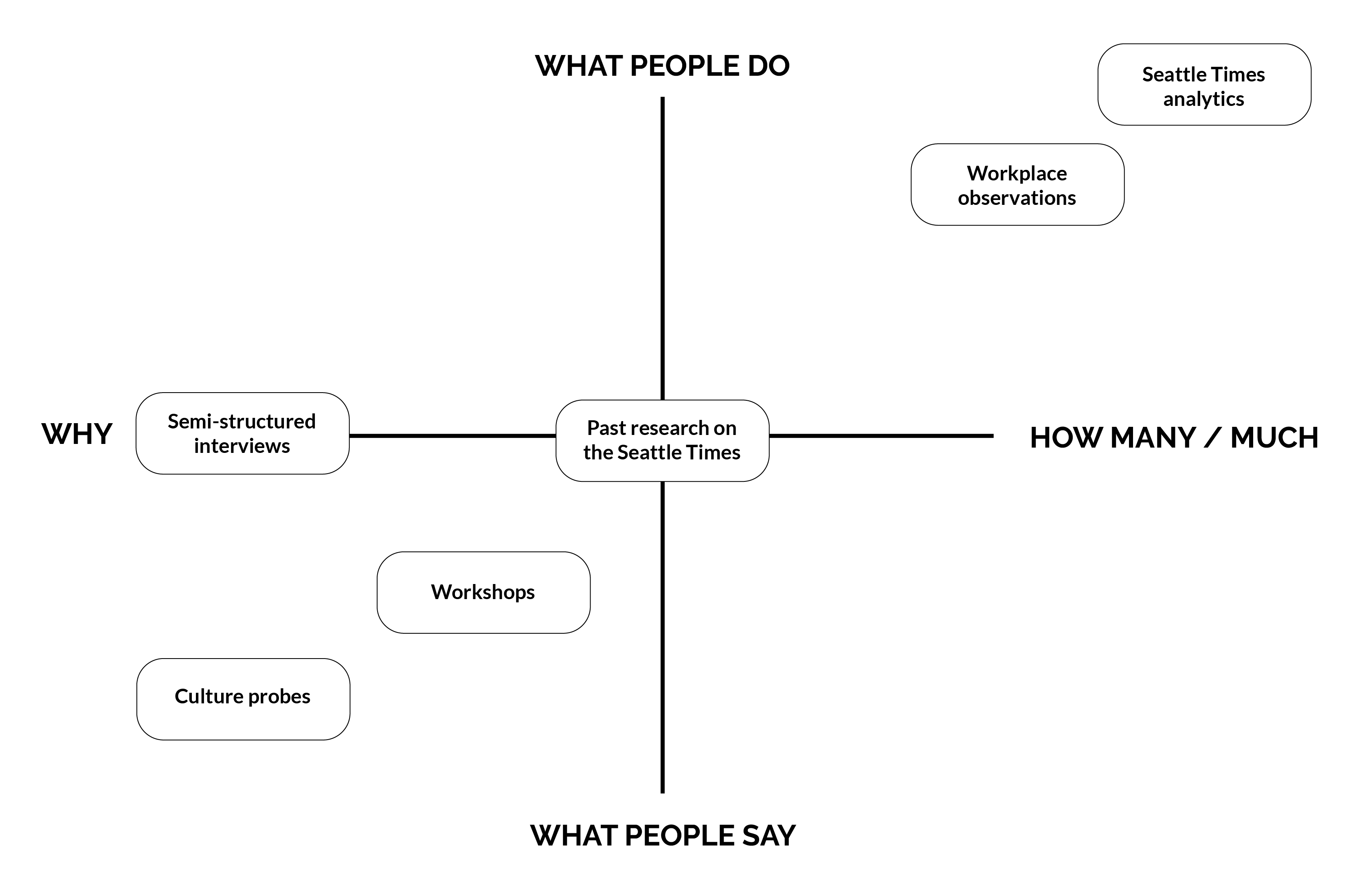
Recruiting Young Seattle
As we began interviews with Seattle Times journalists, we recruited nine millennial research participants. We distributed invitation cards through friends and family, at coffee shops, and at local concerts.
We recruited potential Seattle Times readers; millenials who valued news, but did not necessarily have a relationship yet with the paper.
Participants sampled a variety of ages from 22-32, as well as number of years spent in the city.
I mapped our participants by location. All participants lived in different zip codes.
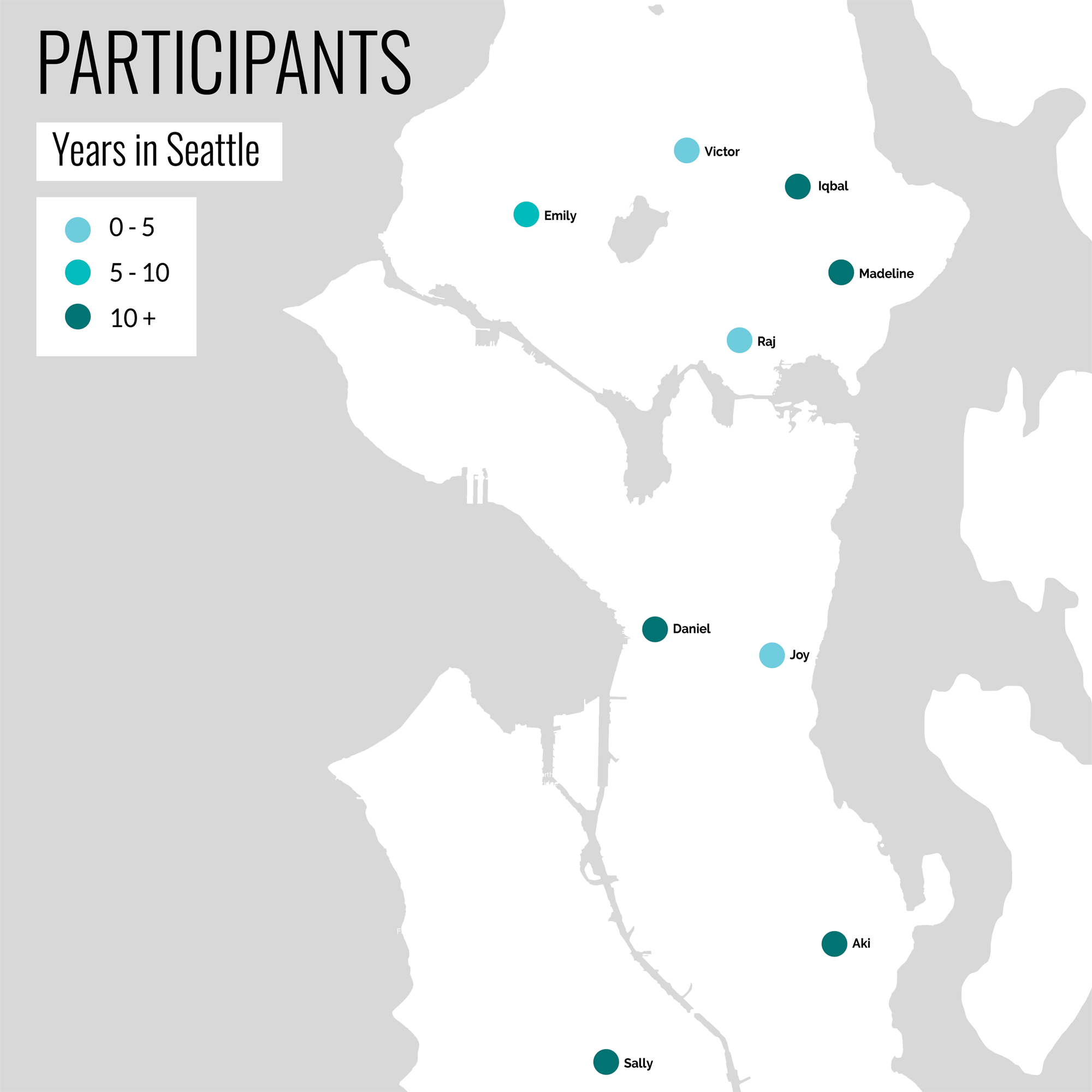
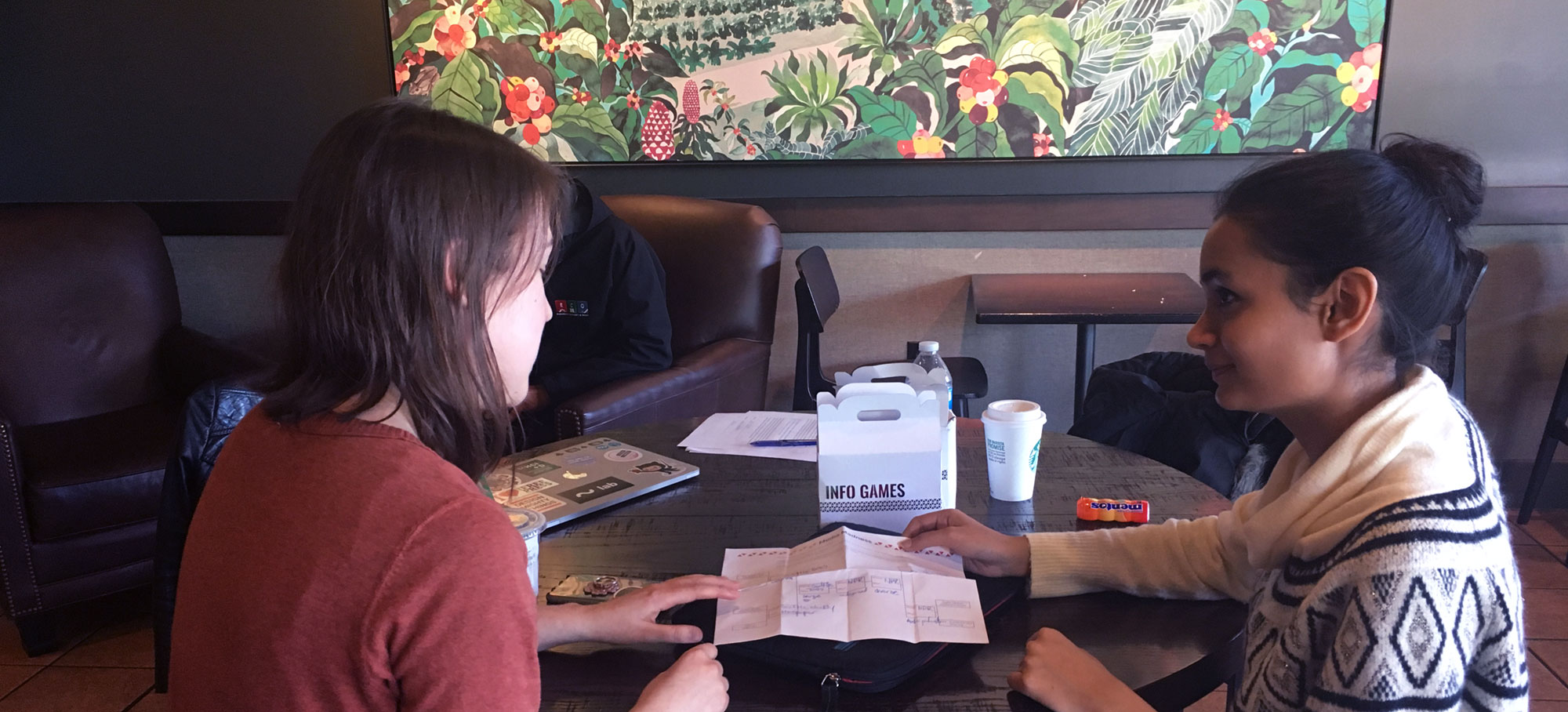
We wanted to learn what interested young Seattelites about their local environment, and how they organically encountered these things in their daily life.
Culture probes are a technique for uncovering the unspoken
“ |
Like astronomical or surgical probes, we left them behind when we had gone ... We used oblique wording and evocative images to open a space of possibilities.— Bill Gaver, Tony Dunne & Elena Pacenti, culture probe inventors |
Culture probes tell a story, rather than asking for one. They create the space for participants to externalize what's on their minds.
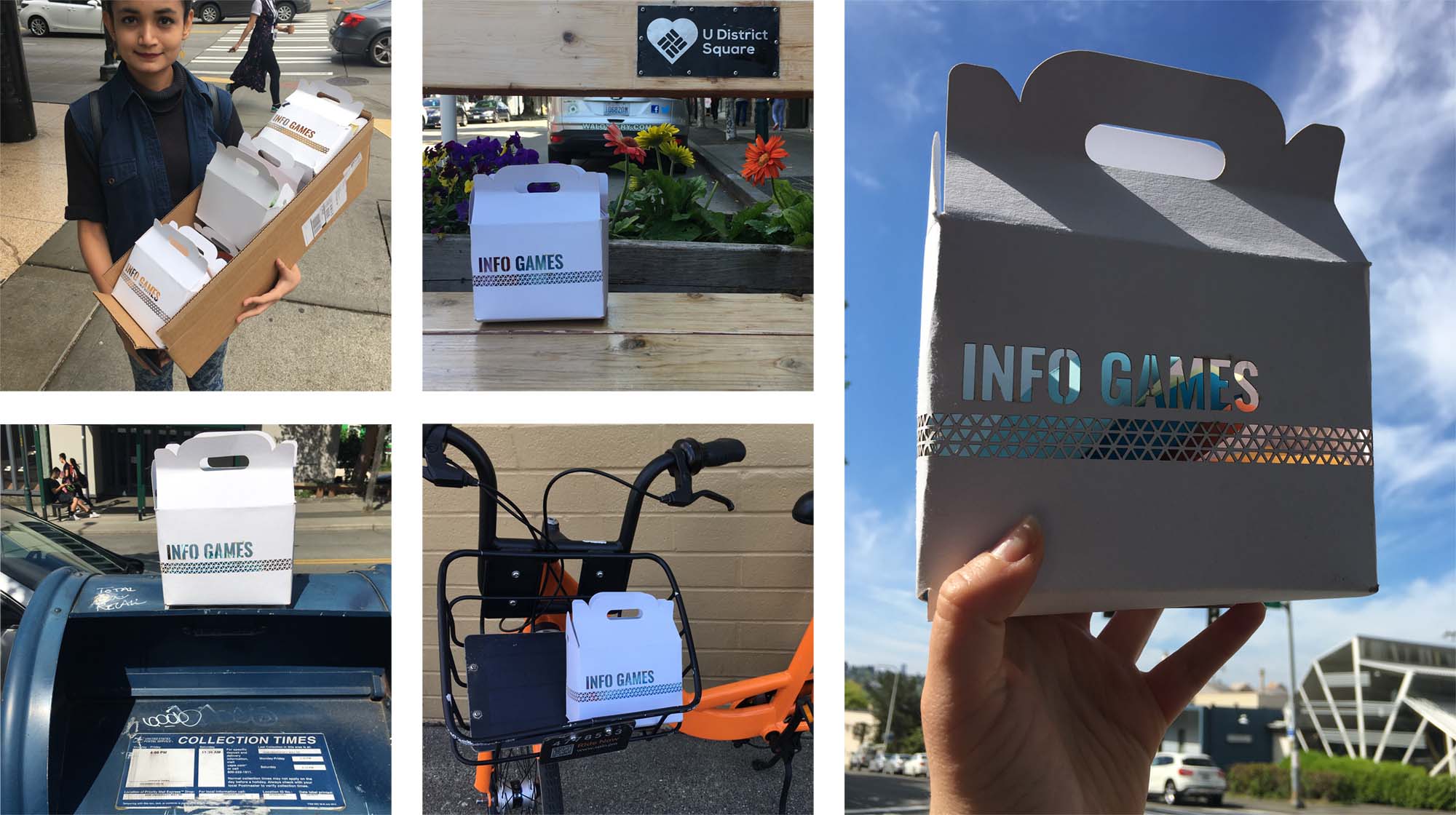
Out of the box
We constructed white, laser-cut boxes with 6 colored envelopes. Each envelope held a 10 minute activity. Our culture probes were designed to be:
All activities were modular and self-contained, with a week to complete. |
We laser-cut our designs to communicate value, and inspire caring responses |
Every activity had to hit this sweet spot. We piloted and iterated to check. |
My team put a lot of thought into our probes, iterating each interaction until we felt we could tell the right story.
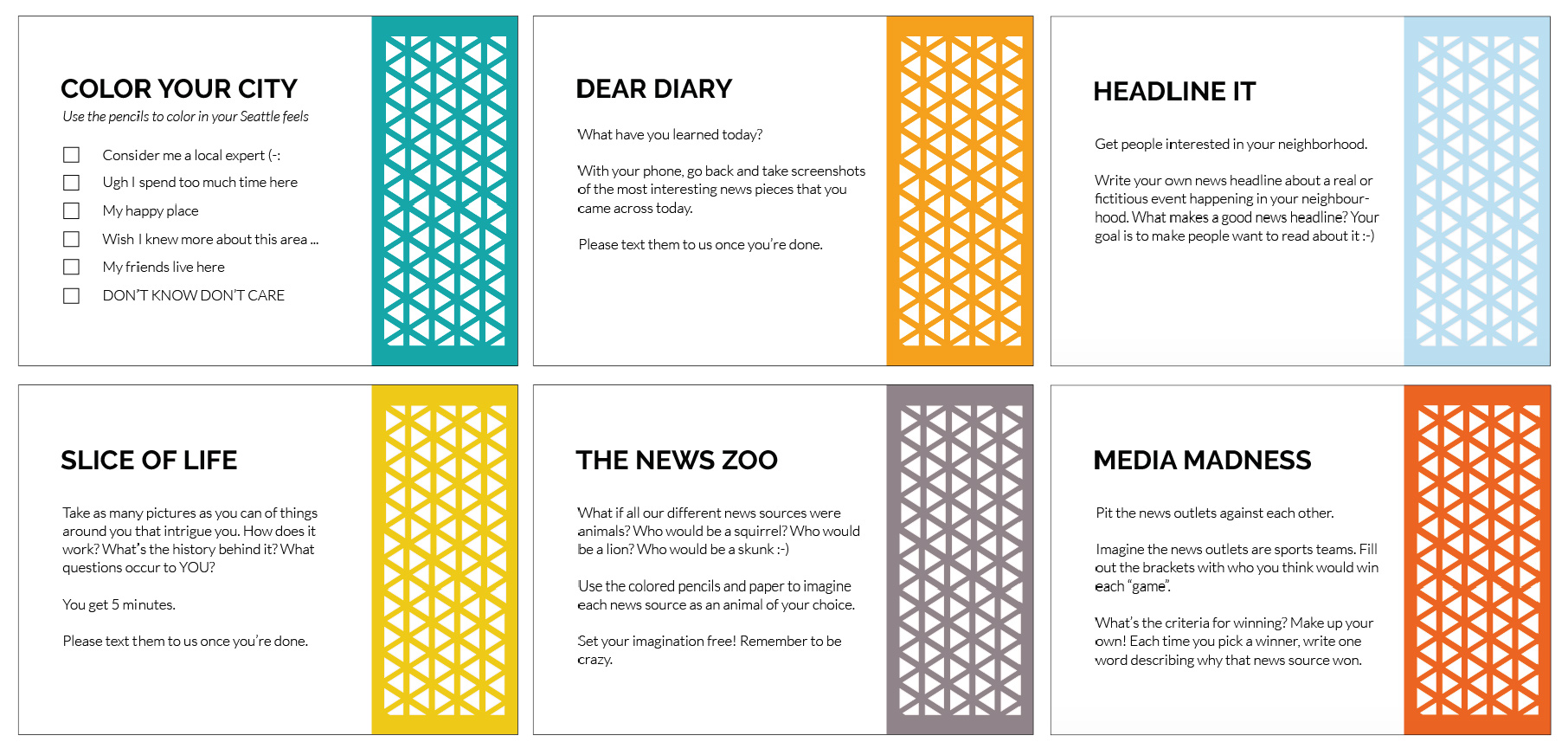
As the team's visual lead I designed our style guide, and executed laser cuts and final artifact production.
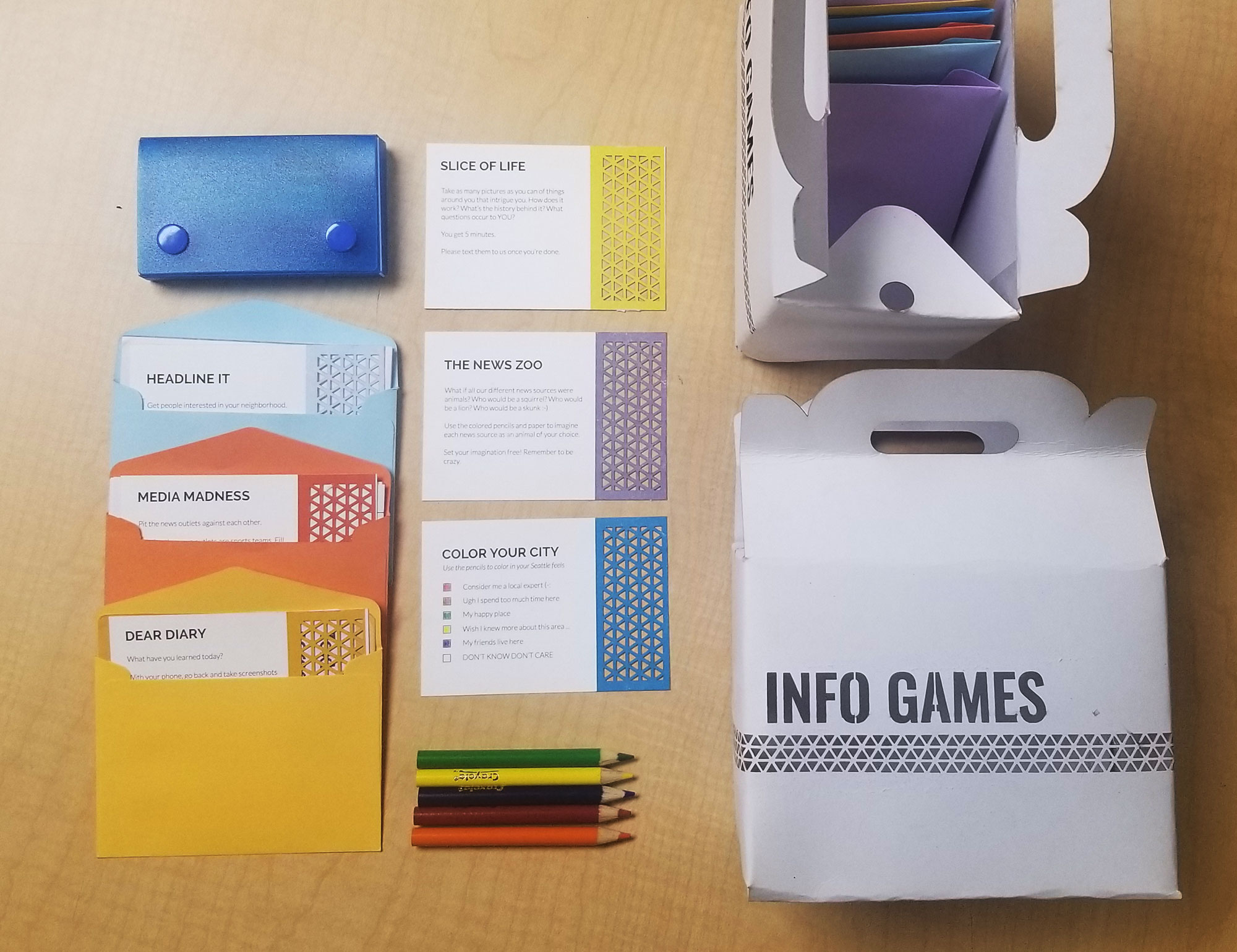
Each activity interrogated specific questions.
For example, the "Color Your City" activity gathered participants' attitudinal and informational relationships to different parts of the city.
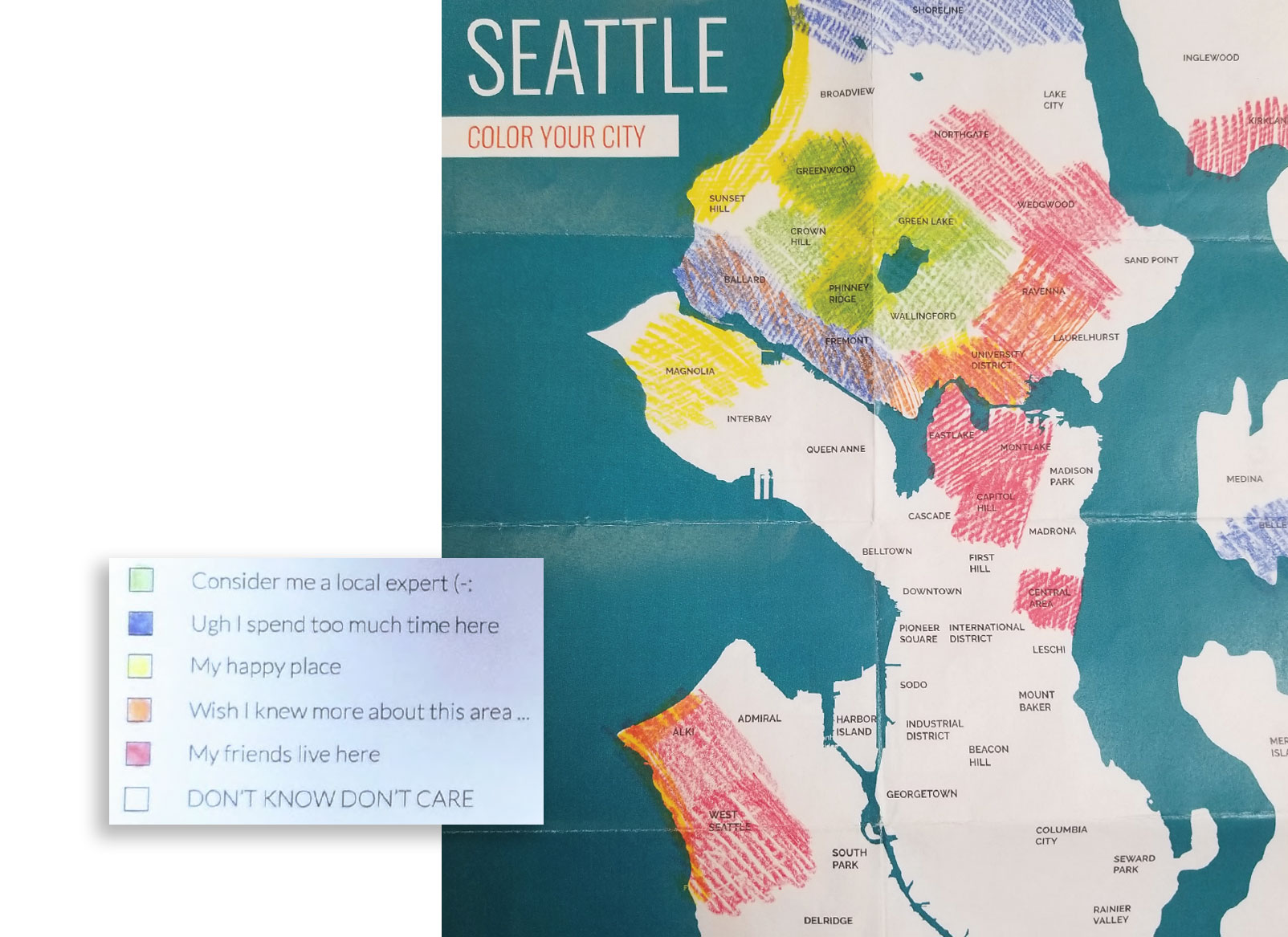
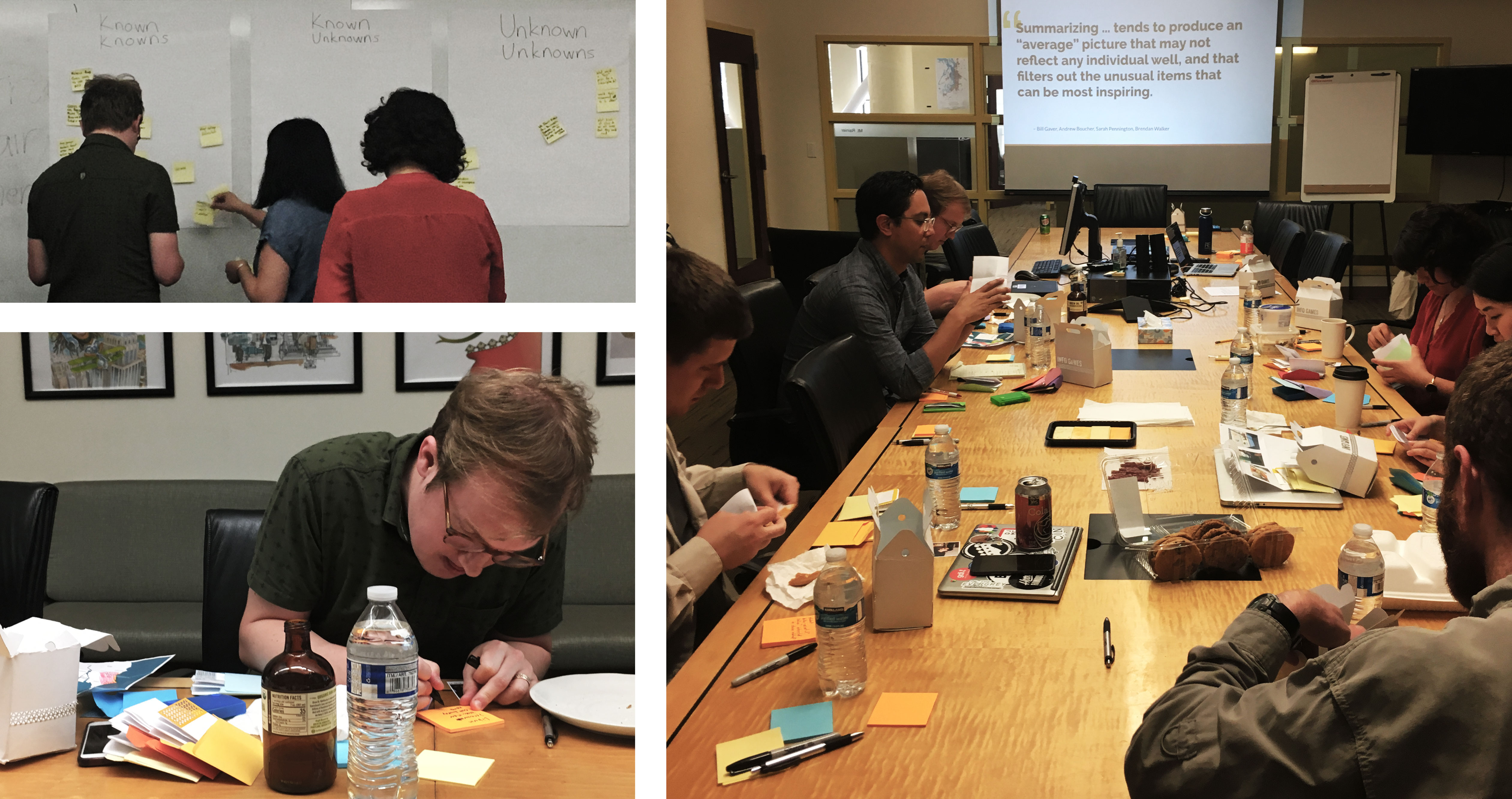
After wrapping primary research, we drew insights from our data by coding categories and connections across all our participants.

|
|
The value of local news is unclear to readers unless they have a way to act upon it. |
Young Seattleites value national impact and global perspectives in their news coverage. They determine news importance based on who is affected.
They do care about local communities, and want to feel informed beyond the bubble of their own lives. They just don't see a connection between the way local Seattle news is covered, and their values.
| lead with actionable impact of local news |
|
|
Young Seattleites desire to see news from multiple perspectives as a way to counterbalance for both personal and news source bias. |
Journalists, on the other hand strive, strive to counterbalance bias through process transparency and factual accuracy.
We identified a gap in how The Seattle Times tries to present itself, and what young Seattleites are looking for.
| juxtapose perspectives earlier in the digital experience |
|
|
The Seattle Times cares about representing local populations but has no systematic methods. |
Reporters have experience getting detailed information about people and environments through sources, but these skills are not put to use understanding readership.
| channels for journalists to investigate reader feedback |
The newsroom has channels for two-way communication with its sources, colleagues, and even tools and news products - but no channel for reaching out to its readership.
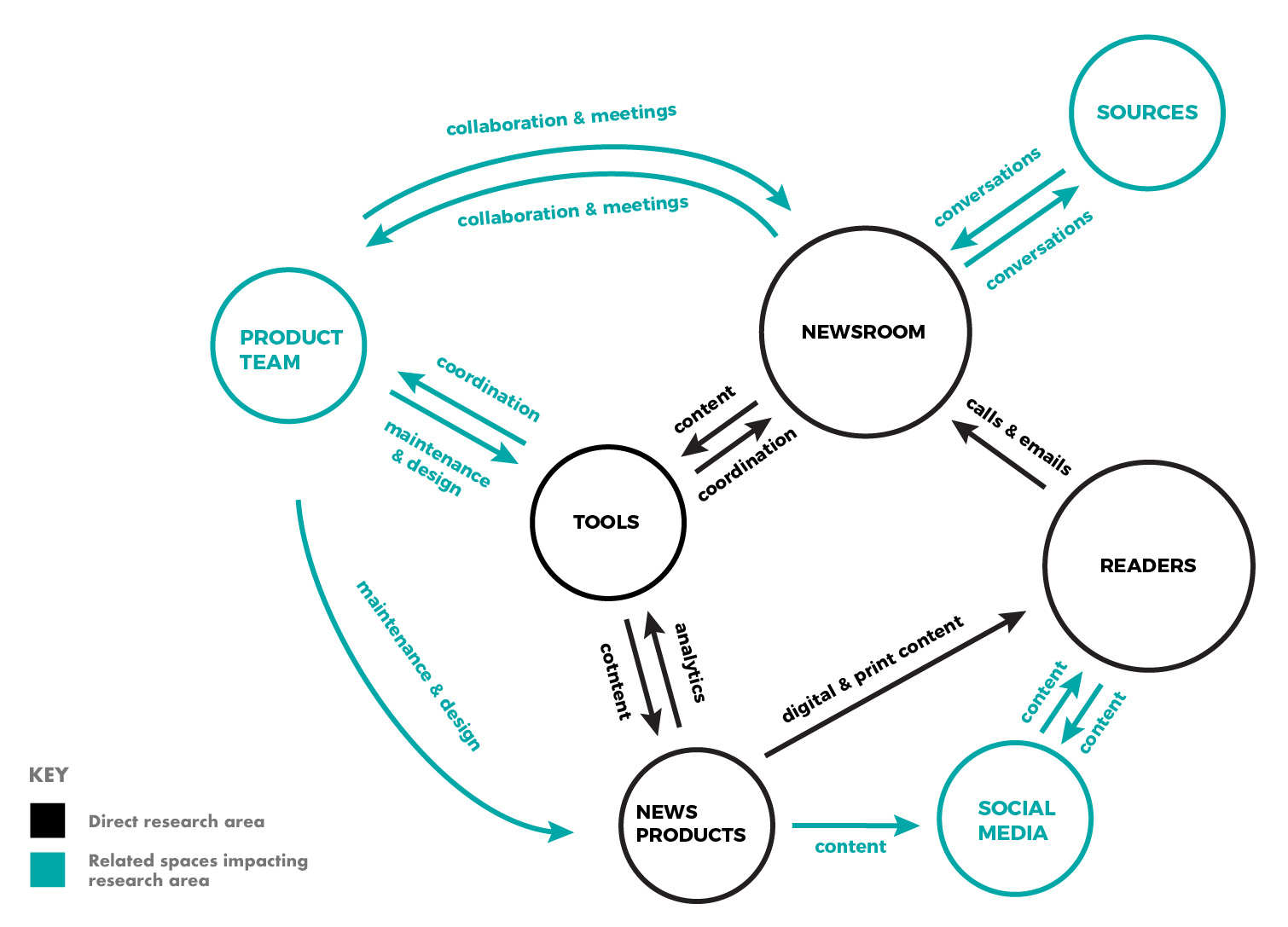
|
|
Young readers consume digital news during short breaks, which make it difficult to remember interesting news series or stories |
This impedes the development of strong relationships with digital news sources, and impacts willingness to invest in such relationships.
| an experience that flows intuitively across short breaks |
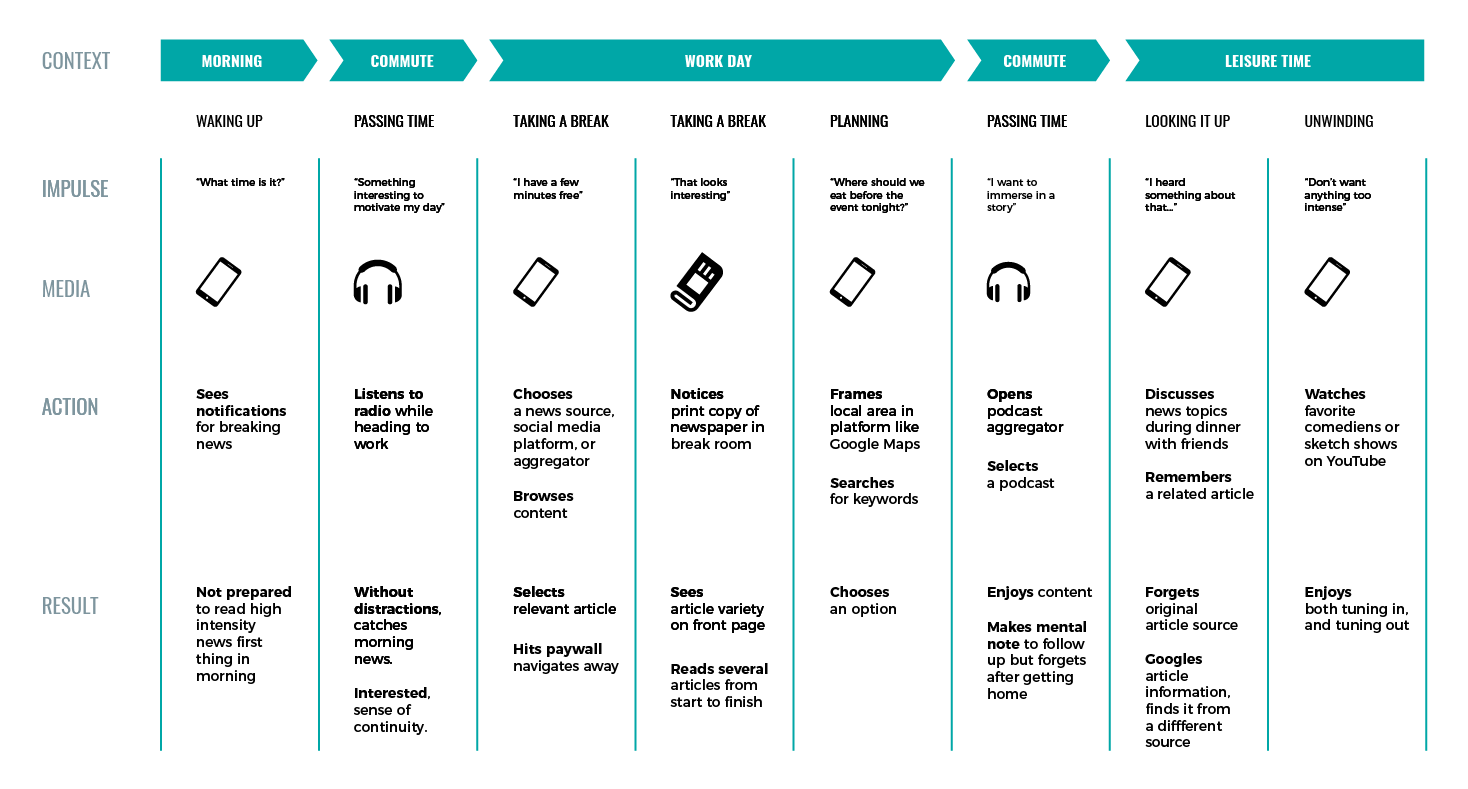
I haven't included work from the last three months of our project - which included wireframing, prototyping, usability testing and a full interface specification. But the outcome is captured in this 90 sec project video.
Enjoy, and please reach out if you'd like to see the details.
More projects

